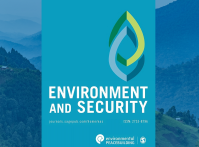-
Tracking This Year’s Extreme Weather
September 25, 2012 By Carolyn Lamere“Over the past several months, extreme weather and climate events seemed to have become the norm rather than the exception,” writes Kelly Levin for the World Resources Institute (WRI). Indeed, records have been broken around the world as countries experience unprecedented heat, drought, flooding, or other types of severe weather. And people are starting to take notice. A number of recent stories try to make sense of this wild weather and what, if anything, it has to do with climate change.
A timeline Levin created for WRI as part of its Extreme Weather Watch series features events ranging from flooding in Brazil in January to the ongoing drought in the United States. The graphic juxtaposes events on opposite ends of the spectrum; the 2011-2012 winter was the coldest in Europe in 25 years, but the fourth warmest in the United States. Floods in Australia occurred simultaneously as a major drought in the Sahel region in Africa, and wildfires swept across Colorado as China was hit hard by excess rainfall.
Levin is careful to note that the timeline is not intended to be comprehensive; though it does include a number of international stories, most focus on the United States.
The timeline also includes studies that connect extreme weather events to climate change. These reports say that while climate change is not conclusively proven to have an effect on some types of storms reported, like hurricanes and typhoons, other weather events, like droughts, heat waves, and flooding, may be attributed to climate change.
Linking Weather Events to Climate Change
Geoff Dabelko, former director of the Environmental Change and Security Program, discussed the possible connection of this year’s extreme weather to climate change on CONTEXT, the Wilson Center’s online interview series:
I think the conditions we’re expecting now are on track with what we expect to see more of. So dry places getting drier, wet places getting wetter, and more extremes in terms of the weather and extreme weather events…It’s a different question than saying, ‘Is climate change causing this drought?’ That’s a much more complex story, one that has a lot of causes behind it, but unfortunately the warming trends that we’re seeing and anticipating with climate change suggest that this is a preview of what may be to come.
Peter Miller, senior editor of National Geographic, agreed that climate change could be behind some of the severe flooding and droughts this year in an interview with Hari Sreenivasan of PBS:
The Earth is rapidly warming, and one effect of that is that the oceans are evaporating more moisture into the atmosphere. More moisture means more energy for storms, more opportunity for there to be these severe downpours like we saw in Nashville last year, like we saw in Beijing last week, or the opposite effect, which is the storms go where we don’t want them to go and we get drought.
National Geographic’s cover story for September, “Weather Gone Wild,” describes not only the heavy rains, high heat, and long droughts of the past few years but also their impact on people around the world. “The rising cost and frequency of natural disasters can be blamed only partly on the weather. Disasters are also on the rise because more people are located in harm’s way,” Peter Miller writes.
Growth in the coastal United States “has exposed expensive beach houses and hotels to hurricanes and other storms,” and wildfires threaten states like California nearly every year. In developing countries, urbanization and population growth mean more people will be impacted by a given flood or heat wave. “Instead of defending themselves against climate change, many communities appear to be leading with their chin,” writes Miller.
But extreme weather can even impact people thousands of miles away from the event. Flooding and droughts can have devastating effects on agriculture, creating scarcity and raising prices around the world. Some have drawn a line from the Russian wildfires in 2010 to high food prices and unrest in North Africa, which touched off the Arab Spring, for example. Similar fears of global consequences have accompanied this year’s extreme weather, particularly the drought in the United States.
Specific weather events are rarely attributed to climate change; some of this year’s storms were caused by La Niña, for example. But the intensity and frequency of these events is a cause for concern. As Miller writes, “the chances for extreme weather are going nowhere but up.”
Sources: Channel News Asia, The Guardian, National Geographic, National Oceanic and Atmospheric Association, Nature, PBS, Red Cross, World Food Programme, World Resources Institute.
Topics: Africa, climate change, disaster relief, environment, extreme weather, Eye On, flooding, population, Sahel, U.S., urbanization
 A Publication of the Stimson Center.
A Publication of the Stimson Center.






